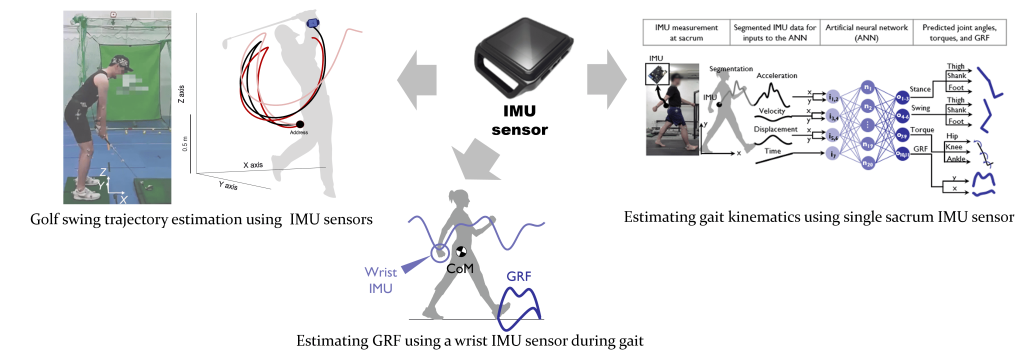Biomechanics Analysis Using Wearable Devices
Real-time on-field analysis of movement using wearable devices has become increasingly in demand in the fields of sports and health care. However, its application is limited due to constraints in sensor type and placement. This laboratory conducts research on biomechanics and AI modeling based on multimodal data to enable motion analysis of the human body using a minimal number of sensors.
- Single IMU Kinematic Data Estimation
- Ground Reaction Force Estimation from Wrist-Wearable devices
- Golf Swing Trajectory Estimation with Multi-modal Data

Vision Applications
In addition to wearable devices, real-time on-field motion analysis using vision sensors commonly embedded in mobile devices is also gaining traction in the fields of sports and healthcare. This laboratory conducts research that combines biomechanical models with vision-based AI to enable human motion analysis at a laboratory-grade level using low-cost systems.
- IMU error correction using vision data
- Gait GRF estimation through CoM position using vision data
